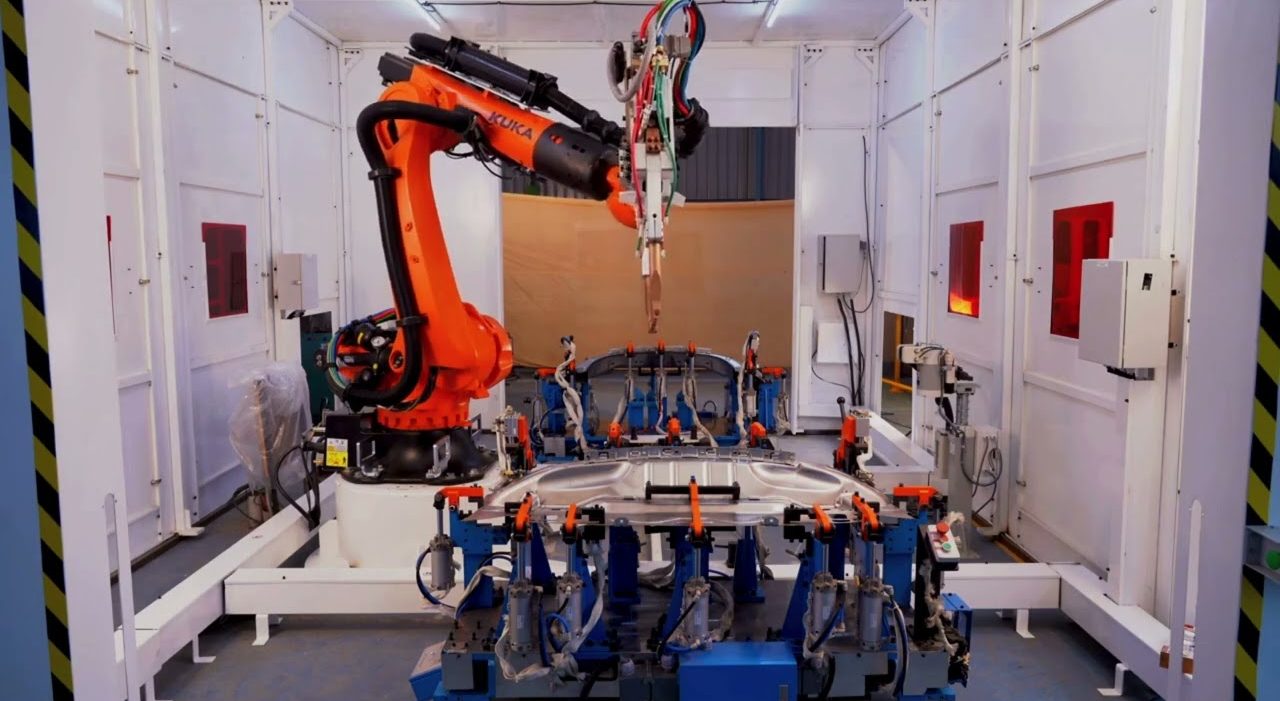Spot welding is one of the most popular and widely used welding techniques in various industries, especially in manufacturing. If you’re curious about how spot welding works or are looking to understand its importance in modern production, this guide will walk you through everything you need to know.
Let’s explore what spot welding is, how it works, and why it’s essential for different industries.
What Is Spot Welding?
Spot welding, also known as resistance spot welding, is a process where two metal sheets are joined together at specific points using heat and pressure. The name “spot welding” comes from the tiny spot created where the two metals meet. This technique is used across several industries, including automobile manufacturing, electronics, construction, and even healthcare technology.
For example, many car bodies are made using spot welding, and it’s also used in assembling electronic products and medical devices. It’s a crucial part of the manufacturing process that ensures high-quality, strong bonds between metal parts.
How Does Spot Welding Work?
Spot welding is a straightforward process that involves using electrical current to generate heat and pressure. Here’s a simple breakdown of how it works:
- Electricity is applied: Copper alloy electrodes carry an electric current through the metal sheets that are to be welded.
- Heat and pressure: The electric current causes heat to build up at the contact point between the metals, which in turn melts the metal and creates a bond. Simultaneously, pressure is applied to the metal pieces.
- Cooling and solidifying: After the current is turned off, the pressure is released. The melted metal then cools quickly, hardening and forming a strong, permanent bond.
The process is fast, cost-effective, and doesn’t require additional materials other than the electrodes and the metal sheets.
Why Is Spot Welding Important?
Spot welding is used in a wide range of industries, and here’s why it’s so important:
- Quick and efficient: Spot welding is a fast process that can quickly join metal sheets, making it ideal for mass production where speed is essential.
- Cost-effective: Because spot welding uses minimal materials and can be automated, it is a cost-efficient option for manufacturers.
- Precision: Spot welding allows for precise control over the amount of heat and pressure applied, making it ideal for thin metal sheets that need to be joined without damaging them.
- Versatility: This technique can be used to join various metals like steel, stainless steel, aluminum, and more.
From car manufacturing to assembling home appliances, spot welding is an essential process that helps make modern production possible.
How to Use a Spot Welder?
Using a spot welder is fairly simple, but safety and accuracy are key. Here’s a basic guide on how to use a spot welder:
- Gather your materials: You will need a spot welder, metal pieces, and appropriate safety gear (like gloves, a welding helmet, and glasses).
- Prepare the metal surfaces: Clean the surfaces of the metal pieces you want to weld to ensure a strong bond.
- Set up the spot welder: Adjust the settings of the welder based on the thickness of the metal.
- Position the metal pieces: Clamp the two metal sheets together in the right position.
- Activate the welder: Use the welder to apply pressure through the electrodes, triggering the welding process. Hold the pressure until the weld cools and solidifies.
- Inspect the weld: After the weld is completed, check the joint to ensure it’s solid and secure.
With practice, spot welding can be a quick and efficient way to join metal sheets together.
Benefits of Spot Welding
Spot welding offers several distinct advantages that make it a go-to method for manufacturers:
- Easy to learn: Spot welding is one of the easier welding techniques to pick up, especially once the basic principles are understood.
- Cost-effective: Since it requires minimal additional materials, it’s an affordable option for manufacturers looking to keep costs low.
- Fast: The quick welding process helps speed up production, making it ideal for industries with high-volume needs.
- Minimal damage: The method is particularly well-suited for thin metal sheets, ensuring minimal damage during the welding process.
Spot Welding Across Industries
Spot welding is used in a variety of industries, including:
- Automotive manufacturing: Spot welding is used to create the frames, bodies, and other metal parts of vehicles.
- Electronics: Many gadgets, from smartphones to home appliances, have parts that are spot-welded to hold them together.
- Construction: Metal materials used in buildings, infrastructure, and machinery often rely on spot welding for strong, secure joints.
- Healthcare technology: Medical devices and equipment are often assembled using spot welding to ensure precision and reliability.
The versatility and efficiency of spot welding make it a valuable technique in many sectors of production.
Conclusion
Spot welding is an essential process in modern manufacturing, providing a fast, cost-effective, and reliable method to join metal parts together. Whether it’s used in car production, electronics, or even healthcare, spot welding plays a key role in ensuring the quality and durability of countless products we use every day.
As a spot welding machine manufacturer, we understand the importance of precision and efficiency in the welding process. If you’re looking for high-quality spot welding machines that meet industry needs, we offer reliable solutions designed to optimize your production process.
Spot welding is a crucial part of the manufacturing world, and we’re here to help you with the right equipment to make it all possible.

